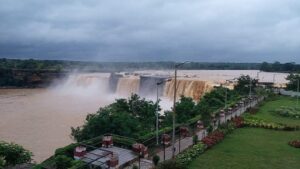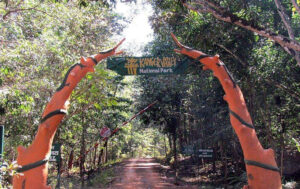Bastar: A tribal treasure trove
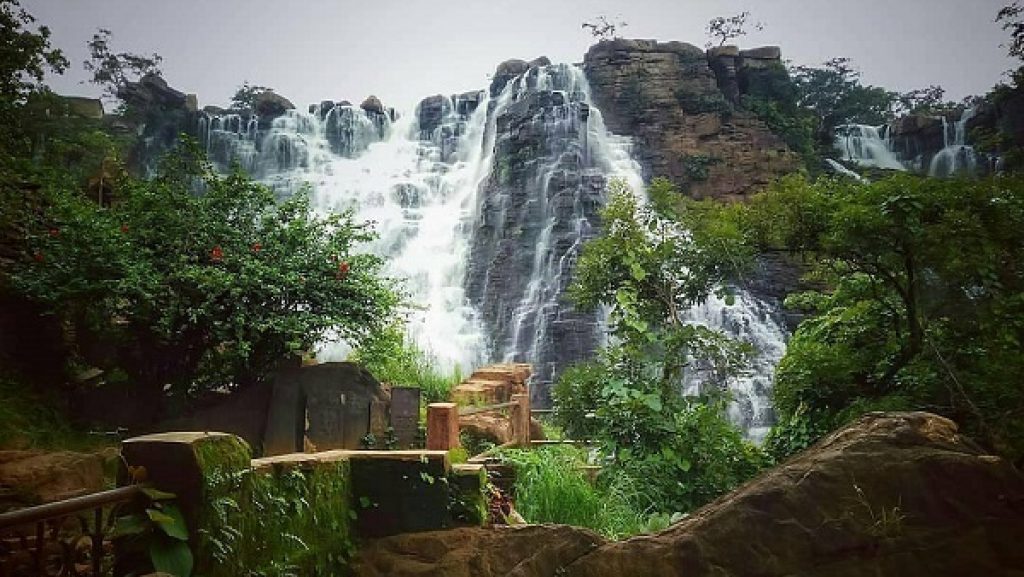
Teerathgarh waterfall is one of the most popular tourist attractions in Chhattisgarh's Bastar (MIG Photos/Richa Nigam)
Often overlooked by travellers, Chhattisgarh’s Bastar is a myriad of wonders. A goldmine of fascinating tribal culture in India, it thrives on the cultural magnitudes, age-old traditions and rituals that are yet to be explored. Whether it is the exclusive handicrafts, wild rivers, quaint villages, ancestral temples, rich tribal cultures, ancient monuments, historical cities, unique festivals, the saga of the royal palace, the wilderness of the natural parks, or forgotten tales of dense forests, Bastar is a land full of surprises and many possibilities.
“Completely unaware of the social fabric and mosaic of the cultural background of this amazing state, I was overwhelmed by everything I saw and experienced there. More than anything, the tribal culture of Bastar just made me fascinated,” says Prachi Viraj, a 30-year-old engineer from Delhi. She visited Bastar last year, in January 2020. “This jewel in the heart of India promises compelling experiences to tourists, once they decide to wade around the land of mysteries,” she adds.
One of the main attractions of Bastar in Chhattisgarh is the tribal communities, their lifestyle and culture. Bastar invites tourists to land that flaunts a thousand shades of green, lush paddy fields spread all the way to the horizon and chirping birds complementing the surroundings. The earthy smell of the wet soil adds to the charm of this tranquil dreamland.
Untouched by the modernity, Bastar thrives on its ancient traditions. The icing on the cake is the simple, humble and hospitable tribal people of this part of the state. “The best way to explore this part of the state is to surrender completely to the rural rhythm and soak into their culture,” adds Viraj.
Tribal food
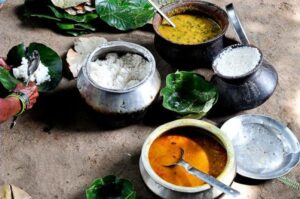
Tribes in Bastar have a variety of cuisines, mostly made out of ingredients found in the forests (MIG Photos)
Food in Bastar has a very distinct flavour. They have a variety of cuisines, mostly made out of ingredients found in the forests and some of these are not for the faint-hearted. Only an explorer open to new experiences and courageous enough to wander into the unknown can relish a few delicacies. Right on top of the unusual delicacies of Bastar is the chapura chutney (red ant dip). Apart from that, the locally brewed drink Mahua, made of the wildflower, is also a must-try.
To make the red ant dip, locals frequently climb tall trees to break ants’ nest with a stick and collect the ants. Back at home, they make a fine paste of the red ants adding ginger, garlic, chillies and serve it with lunch. Not just that, tourists are also served authentic tribal cuisines that include bhat (rice), daal (pulses), amath (a mango savoury) on a freshly stitched plate made of Sal leaves.
Another must-try on a visit to Bastar is a snack made of rice and lentil fried called Bobo. Nothing is better than complementing the meal with a dessert called Soju, made of jaggery sweetened dessert that looks like a barfi (a popular milk-based sweet).
Travellers also find a variety of alcoholic beverages in Bastar. It is an important part of the tribal lifestyle. “Don’t be surprised if you witness women selling the beverages in the weekly haat (market) and simultaneously sipping the drinks, as this is essential to their tribal diet,” explains Viraj. Some of the prominent drinks are Mahua, Salphi, Landa and Rasum, all of them made from forest fruits and flowers.
Art & craft of Bastar
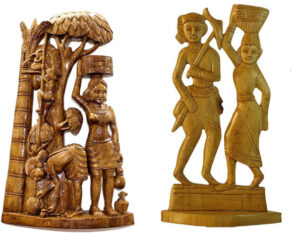
Tourists are not only allowed to buy these items but also, locals are more than willing to teach a few skills to the travellers
The signature craft of Bastar is Dhokra. It is an ancient method of metal casting which have been passed down through generations. It is said that it dates back to over 4000 years. This unique piece of art has become the identity for Bastar.
They are also known for slim iron figurines which are crafted with wrought iron. Using this technique, they create mirror frames, iron wall hanging, candle stand and many more. Terracotta is another craft that Bastar is known for. Weaving, tribal paintings, Kosha silk, stone sculptures are remarkable from this part of the region as well.
Tourists are not only allowed to buy these items but also, locals are more than willing to teach a few skills to the travellers who are interested.
The Ghotul
Ghotul is a very unique social arrangement for the Cheliks (unmarried boys) and Motiaris (unmarried girls) who are encouraged to go to the exclusive living space where they meet, greet, dance, sing and spend time together in an earthen and wooden hut at the outskirt of the village. The purpose of the Ghotul is not just to find the potential life partner, but they are given an exclusive time to know each other before the big commitment. In the Ghotul, they learn about various tribal customs, rituals, social responsibilities, various life-saving skills and are also taught about sexuality. The Ghotul is an indispensable part of the Muria way of life. They believe that the Lingo, their supreme deity, created the first Ghotul.
“The Ghotul culture celebrates a great sense of liberation. It is almost unlikely to believe that a community living in the middle of dense forest, far away from the spell of modernity, is practicing a system which is way forward than even what the modern folks living in the metro cities are used to,” adds Viraj.
With time, the natives have become aware that the tourists find their custom unique and hence if the tribe agrees, tourists are also allowed to spend some time with the young people in Ghotul and study their lifestyle.
Chitrakoot Waterfall
Chitrakoot Waterfall is one of the main natural attractions of Bastar. Located in Jagdalpur, this spectacular waterfall changes colour from season to season. The milky white water cascading from the flat surface in the hot summer season turns brown when the monsoon is in its full glory.
The splashing sound of the Chitrakoot Waterfall dominates the surroundings. This massive waterfall is also called as mini ‘Niagara’ of India, due to its horseshoe-shape. A height of about 100 feet and a width of about 1000 feet, makes it the widest waterfall of India.
Kanger Valley National Park
Just 27 km away from Jagdalpur, the biggest town and headquarter of Bastar district, Kanger’s virgin forests have been a haven for nature lovers, environmentalists, and adventurers. The Kanger Valley National Park is considered as one of the most picturesque national parks in India. Spread over 200 sqkm, it is is rich in flora and fauna and a huge variety of wildlife can be seen here. Under the umbrella of moist deciduous sal, teak and bamboo trees, the forest flaunts the most gorgeous sight.
The lush green and thick forest of the national park is quite enchanting. Wild animals like barking deer, sambar, cheetal, langur, macaque monkey, leopard, and Sloth bear are commonly found here. Be attentive to the sound of Bastar hill myna, an endangered bird with yellow plumage on the back of its head. Besides wildlife, there are many tourist attractions inside the park such as the Kutamsar Caves, Kailash Caves, Dandak Caves and magnificent Tirathgarh waterfalls.
Dandak, Kutumsar and Kailash caves
Of the three caves, only Kutumsar is open for tourists. The narrow pathway inside leads one to the open wide hall, 300 m in length. Tourists would be amazed to see the limestone stalagmites dripping from above once they throw light on it. Dandak and Kailash caves are not open for tourists, but with special permission from the district forest officer to enter these caves, tourists along with a certified guide can explore these too.
Bastar Dussehra
The Bastar Dussehra is the most prominent festival of this part of Chhattisgarh. It is the longest festival in the world and goes on for 75 days. Bastar Dusshera is celebrated in honour of the local deity Shri Danteshwari and dates back to almost 800 years ago.
The whole village comes to life with vibrant colours and various festivities during 75 days of grand celebration. The festival starts from July and continues till October. Thousands of tribes from all across Chhattisgarh participate in the festival rituals, especially during the last ten days.
The highlight of the festival is the Rath Yatra where chariots, decked up with flowers, are pulled around the town along with the procession, making it a visual treat.

